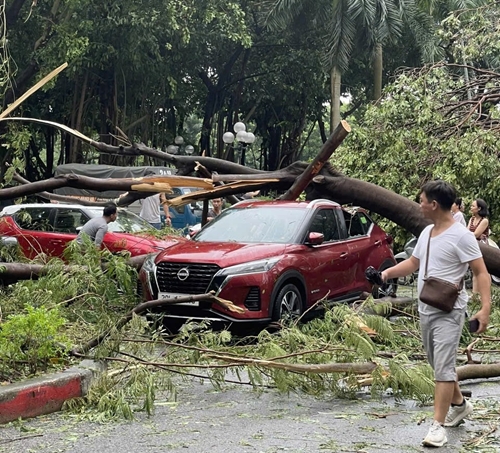Specifically, three fatalities and 58 injured people were recorded in Quang Ninh province while one death was reported in Hai Duong province.
    |
 |
|
A fallen tree crushing cars parked on the side of the road |
The storm, the third to enter the East Sea (aka South China Sea) this year, caused widespread power outages in Hai Phong, Quang Ninh, Thai Binh, and Hai Duong. Many houses were damaged or had their roofs blown off, and thousands of trees were uprooted in Quang Ninh, Hai Phong, Thai Binh, Hai Duong, Hanoi, Bac Ninh, and Bac Giang.
After making landfall in the Quang Ninh - Hai Phong area, typhoon Yagi brought strong winds and heavy rain. The strongest winds near the storm's center reached levels 11-12 (103-133 km per hour), with gusts hitting level 15.
Several areas recorded significant rainfall, such as Co To island of Quang Ninh (127mm); Cat Ba district, Hai Phong city (198mm); and Tien Hai district, Thai Binh province (208mm). In Hanoi, heavy rain and strong winds began around 3p.m. on September 7.
To ensure human and property safety, Prime Minister Pham Minh Chinh signed Official Dispatch No.88/CĐ-TTg on September 6 directing ministries, sectors, and localities to focus on responding to typhoon Yagi and the subsequent flooding.
During a working session on September 7 morning with the General Department of Meteorology and Hydrology, the National Centre for Hydro-meteorological Forecasting, and related agencies, Deputy Prime Minister Tran Hong Ha urged ministries and relevant agencies to heighten their vigilance, exert efforts, and take measures to in response to the typhoon. He emphasized the need to prioritize the safety of people and property.
Source: VNA